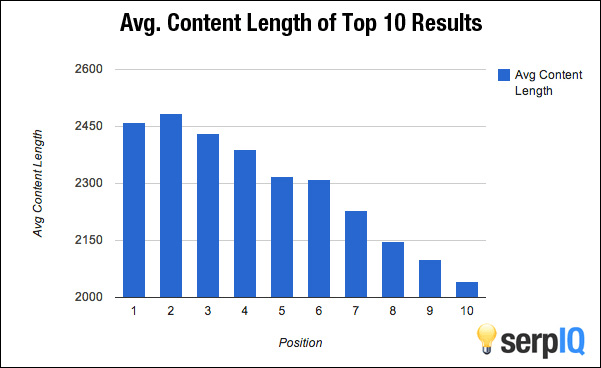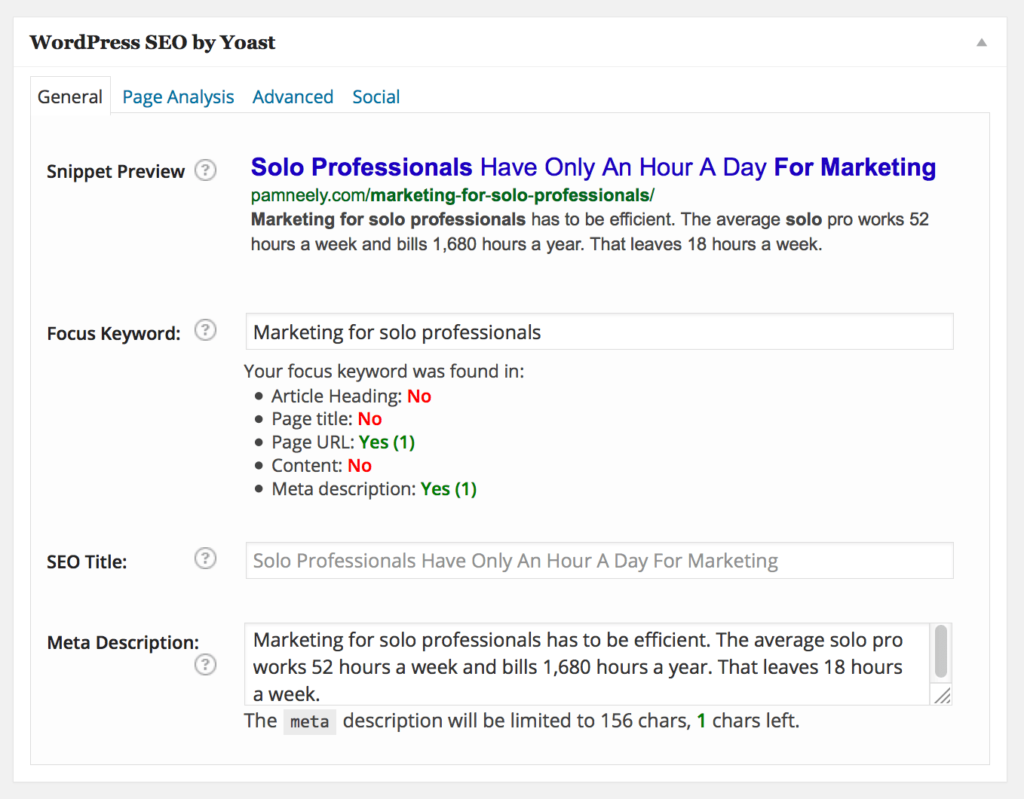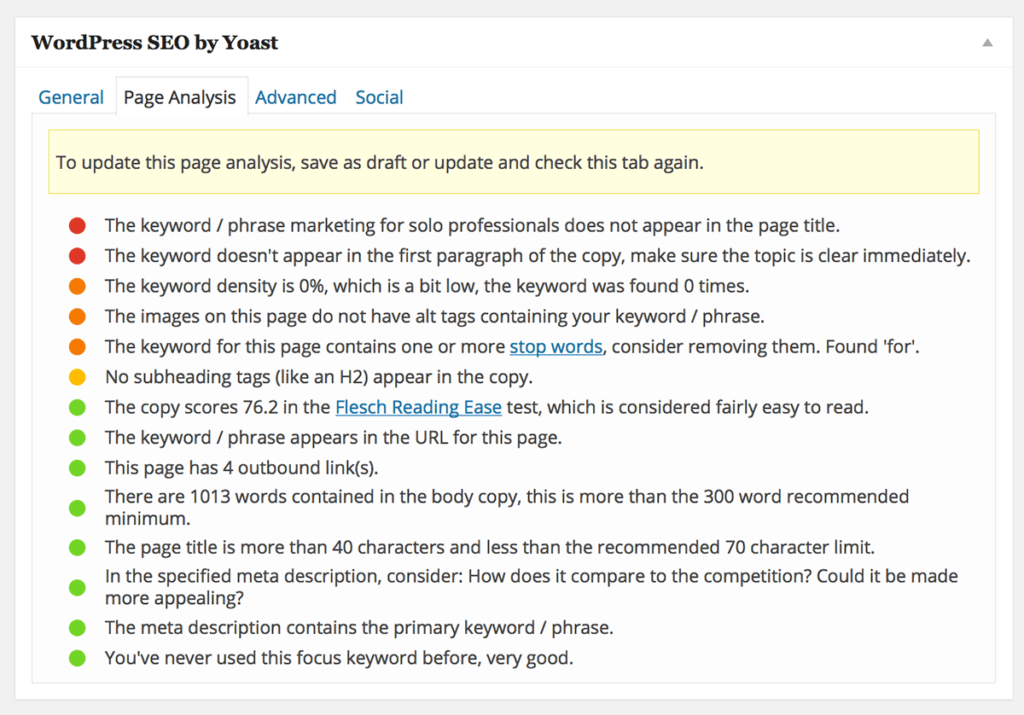 One of the biggest reasons companies start a business blog is to drive more search engine traffic to their site. But as you know, “if you build it, they will come” is not a smart business strategy. You can pour thousands of dollars and dozens of posts into a company blog only to see it sit silent. Unread. Unshared. Unprofitable.
One of the biggest reasons companies start a business blog is to drive more search engine traffic to their site. But as you know, “if you build it, they will come” is not a smart business strategy. You can pour thousands of dollars and dozens of posts into a company blog only to see it sit silent. Unread. Unshared. Unprofitable.
Optimizing your blog posts for search engines is only one part of creating a successful company blog. But it helps. A lot. If you’ve got the other parts of your blog working, even a modest stream of traffic can be enough to make a blog worthwhile.
On-page versus off-page SEO
Because we’ll be talking about optimizing blog posts, we’ll focus entirely on one kind of search engine optimization (SEO): On-page. On-page SEO, as the name suggests, is everything you do to the page itself to improve the search engine optimization of that page.
For example, say you wanted to optimize https://YourSite.com/blog/products.html. All the changes you’d make to products.html would be on-page SEO. If you wanted to optimize the off-page SEO for products.html, you’d build links to that page and try to get more social shares for it.
Got it? Great. Here’s how to write a (nearly) perfectly optimized blog post:
Pick the right topic to write about.
Does this sound like the first step of a content marketing strategy? It is. Your content strategy should be informed by your SEO goals, and vice versa. Notice I said “informed by,” not “determined by.”
Here’s the deal: There are hundreds, maybe thousands, of keywords you could pick to write a post about. But which ones are tied to topics your audience really wants to know about? Which keywords will let you write a post that moves your readers toward hiring you or buying from you, even if it’s the first step of a two-year sales cycle?
Those are the keywords worth writing about. Serve your readers first. Serve yourself second. Ideally, find topics to write about that serve both them and you simultaneously.
Choose blog post topics carefully; you’ll be competing for readers
You must pick strategic topics because while it is possible to rank for any keyword, the competition is fierce. You’ll need to craft a post that will sparkle if you want to rank among the two million blog posts published every day.
When I say “rank” for a keyword, I mean getting to the first page of search results. If you aren’t on the first page of results, you’re basically not in the game. Roughly 92% of people don’t go beyond the first page. And 98% don’t go beyond the second page.
It gets worse. First position in the search results gets between 31% and 56% of all the clicks, depending on which study you cite. Second position gets half that – 14%. By the time you’ve fallen to third position, you’re getting fewer than 10% of clicks. It falls off even further as you go down the page, as this chart shows.

With the top results hogging so much traffic, you can see why smart SEO experts urge their customers to go after keywords with less competition. If you can get ranked in first position for a keyword that gets 500 searches a month, you’ll do better than if you ranked even in fifth position for a keyword that gets 2,000 searches a month.
| Searches per month |
Keyword position in search results* | Average clickthrough rate |
Total clicks |
|
| Keyword 1 | 500 | 1 | 31% | 155 |
| Keyword 2 | 2000 | 5 | 5.5% | 110 |
* Your page won’t always be in position two; every time a search is run the results are jostled a little. When I say your page will be in position two, I mean on average.
Pick the right keywords, preferably long tail keywords.
Keywords that have more than three words are called “long tail keywords”. Long tail keywords are a smart place to focus, for three reasons:.
- Advertising: There is less competition for long tail keywords, making them more affordable for pay per click ads.
- Ranking: Since long tail keywords are more specific, they can rank higher in response to the more detailed, longer queries people make today.
- Conversion: The more detailed the search query, the more likely it is that the buyer is further along the in the buyer’s journey, and so closer to conversion.
The conversion rate for a click from a keyword search for “TV” will be low, like less than 1%. But a click from a keyword search for “Sony KDL40W600B 40-Inch 1080p 60Hz Smart LED TV” may have a conversion rate as high as 3%. That’s because long tail keywords (good ones) are used by people who are further along in the buying cycle (or the donation cycle, for you non-profits).
If we add this higher conversion rate into the table from before, things start looking even better.
| Searches per month |
Keyword position in search results | Average clickthrough rate |
Total clicks | Conversion rate | Conversions | |
| Keyword 1 | 500 | 1 | 31% | 155 | 3% | 4.65 |
| Keyword 2 | 2000 | 5 | 5.5% | 110 | 1% | 1.1 |
Start searching for topics that have long tail keywords you could write blog posts about. You can use to find keywords with low competition. Google’s autosuggest is a free option: just start typing your test keyword into a Google search window, and make note of what Google suggests. Google’s keyword planner is useful to find suggestions for keywords; you’ll need an AdWords account to use it, but those are free. There’s also a free version of SEMRush.
While long tail keywords are the best place to start, you don’t have to use them exclusively. If you’ve got a killer blog post idea that includes a high-traffic, high-competition keyword, go for it.
Write for SEO or for people?
Writing for the web is a balancing act. From a pure SEO standpoint, you start with the keyword research. What are people looking for? How are they looking for it? What questions do they have? From there, you go into the editorial process to decide if you have a story to tell. “I see people are looking for fried green tomato recipes. Is this relevant to our audience? Do we have a unique take?”
If you have synergy between the words people are looking for and a story you can tell, you write the post and then do the final optimization tweaks. From an editorial standpoint, you’re looking for the stories and articles that your readers want to read. In this case, you start with the story, analyze which keywords apply most, and then optimize the story for that one keyword that you want the story to be found for.
Write the best headline possible.
 The headline is important because you are creating content for more than just the search engines. Yes, it is important to rank, but the goal isn’t to rank. The end goal is to get real people to read your content and take actions that are valuable to you. A well written title will not only help increase the rank of a post, but more importantly, will increase the likelihood of someone you care about actually clicking on the listing and reading the post.
The headline is important because you are creating content for more than just the search engines. Yes, it is important to rank, but the goal isn’t to rank. The end goal is to get real people to read your content and take actions that are valuable to you. A well written title will not only help increase the rank of a post, but more importantly, will increase the likelihood of someone you care about actually clicking on the listing and reading the post.
Structurally speaking: It’s ideal to get the keyword as close to the beginning of the headline as possible. “Long Tail Keywords: Are They All You Should Care About?” will probably do better in the search results than “Should You Not Care About Anything Except Long Tail Keywords in Your SEO?”
But don’t butcher your headlines to force the keywords to the beginning. On average, people spend less than 6 seconds on a search results page before taking action, and they won’t click a poor headline, keyword or no keyword. Remember: it doesn’t matter how high you rank if nobody clicks on your listing.
Use your keyword in the subheaders.
After headlines, the next place to work your keyword in is in the subheaders. These should be marked up as H2 or H3 tags in your post.
Subheaders serve readers as guides that make your post easier to read, but they also make your post easier to scan. People scan posts more often than they read them. If you try to fight this, and force your readers to read every word, you’ll lose. Remember, there are a lot of websites out there. They’re only a click away.
Try to get your keyword in at least one subheader. If you can, add one or two additional variations on your keyword to other subheaders. As Google gets better at deciphering a searcher’s intent, those synonyms and related words gain in SEO value.
Include variations of your keyword throughout your post.
A variation could be plural versus singular, or a closely related term, like switching between “SEO” and “search engine optimization.” Ideally, you’ll use these additional terms naturally. And that’s part of why the search engines look for them. The authors of the search algorithms know that when humans write for humans, they use similar but slightly different words.
Successful content creators are the ones who write for people (not search engines). They don’t use the phrase “Naples Florida time-share two bedroom apartment,” or if they do, they would never use it more than once every hundred words or so. If they did, they’d sound like robots.
Write a long post (usually).
You can write 300-word blog posts. No one is going to fine you. However, there is a lot of data showing that writing long content is the better way to get ranked. This graph from serpIQ shows top-ranking posts are well over 2,000 words:
BuzzSumo analyzed the social share counts of over 100 million articles over eight months, as reported by Noah Kagan on OKDork and found that the longer the content, the more shares it gets, with 3,000-10,000 word pieces getting the most average shares (8,859 total average shares).
There’s a lot of differing opinions on what the ideal length of a blog post is. There are plenty of studies that support long content, but none of them were specifically done on your blog. Also, just because long-form content does well, you don’t have to write a 3,000 word post every time. For example, if you are writing a post to answer a specific long-tail keyword and you can address the topic in 300 words, write 300 words. If you’re writing about a more complex topic, it is unlikely that you can do justice to the topic in 800 words, so that post will probably be longer.
I have two pieces of advice if you decide to do long form content posts:
- Long content is not a license to blather or to write filler content. The reason long-form content works is because it goes into great detail. Long form posts are meant to be the definitive source of information on a specific topic. That’s why they’re long. It’s probably why they get ranked.
- Long form content needs to be formatted correctly, as demonstrated in this post by Heidi Cohen, or your readers will run. Good formatting includes subheaders, bullet points, and plenty of images that directly support the topic.
Place your keyword – and keyword variations – into the alt tags of your images strategically.
Write short descriptive copy for the alt tags of the major images in your post and make sure it’s around 70 characters long. Use your keyword and its variations in these tags.
Alt tags get read by search engines, but they also end up in other interesting and useful places. If someone pins one of your images to Pinterest, the default description of the pin will be whatever the alt tag says.
Add your keyword into the URL of your post.
It’s another small signal that shows the page really is about the keyword. Also, seeing the keyword in the URL helps the human searcher have more confidence in picking your page from all the other listings.
Write a meta description tag that includes your keyword, and that is enticing for human users to click.
Keep the meta description to 150 characters and spaces. Think of your meta tags as if they were ad copy … because they are. It’s funny how we obsess and test pay-per-click ad copy, but barely spend a minute writing meta description tags. Those meta description tags will be seen right next to that precious PPC ad copy. Your meta descriptions are competing against PPC copy, so make them count.
It’s time to write those descriptions as carefully as if they were ad copy. Use Portent’s SERP (Search Engine Results Page) preview tool to see how your work will appear.
Link to other pages on your website.
These “interior links” send page authority to other pages on your site. Having other pages of your site pointing to this new post also helps it get found faster. It also passes some page authority from those existing pages to your new page.
Link to other pages on the web.
A few years ago, some SEO experts worried about losing page authority if they linked out from their page to other sites. Times have changed. It’s good to link out to other pages on the web.
Other marketers worry about sending readers away from their site because the reader may never come back. I sympathize with this concern, but sharing great resources with your reader benefits them. To pretend there are no other good resources on the rest of the web is disingenuous.
Remember, your readers can leave in a heartbeat. They want you to show them what’s important, what’s worth seeing online. If you do so, they will trust you more and come back to your blog.
Invite comments.
Comments are not a huge signal to the search engines that your page is worth indexing, but they help. You want comments. Do not turn off comments.
If you’ve turned comments off because you’re overwhelmed with comment spam, go get the WordPress plugin Akismet and install it today. There is a free version. Akismet may not get rid of every possible spam comment, but it will reduce the spam comments you have to deal with by about 95%.
Go easy on the tags.
Tags are basically subcategories you can use to organize your posts. For example, this post might have the tags, “SEO,” “keywords,” and “headlines.” You’ll probably recognize tags from the tag clouds some blogs use. Add a couple of tags to each post, but avoid overusing them.
Bring a new twist to old topics.
This last tip is more for the benefit of your readers than for the benefit of search engines. Don’t just regurgitate what’s been said before. Absolutely do not just go find the most popular post for a given keyword and have someone rewrite that post. Find new research if you can. Or go further and email an expert to get an original quote from them. That’s the sort of information that can’t be found anywhere else.
As you publish great posts, your bounce rates go down. People will stay longer on your site, and come back more and more. Google is tracking all of that. They are laser-focused on delivering a good user experience for their users. If your post has the earmarks of a post that people like, Google will reward your page with traffic.
Tools for the job
 Now that we’ve talked about all the strategy and nuts and bolts of tactics for optimizing your post, I’ve got a tool for you. It’s a free WordPress plugin called Yoast SEO . It will score your posts for SEO optimization as you work.
Now that we’ve talked about all the strategy and nuts and bolts of tactics for optimizing your post, I’ve got a tool for you. It’s a free WordPress plugin called Yoast SEO . It will score your posts for SEO optimization as you work.
If you could only do one thing to SEO optimize each post you write, get this plugin and do what it says until the button turns green.
This is what the green button will look like. When you see it, you’ll know you have at least a decently optimized post. The optimization ratings for posts are “Good”, “Okay” and “Bad”. Good earns you a green button. OK is a yellow button. Bad is a red button.
This is what the Yoast analysis looks like:
These are what its suggestions look like:
 There are other tools available to help you optimize a blog post, or you could just write a post-it note checklist of the items we’ve covered, and use it for a quick spot check before you publish. However you approach your blog writing, now you know the SEO mechanics required to get ranked.
There are other tools available to help you optimize a blog post, or you could just write a post-it note checklist of the items we’ve covered, and use it for a quick spot check before you publish. However you approach your blog writing, now you know the SEO mechanics required to get ranked.
Do you have any tips for how to optimize a blog post for search engines? Let us know about them. Please leave a comment below.
And be sure to read this eBook to find out how to make any content SEO friendly.




